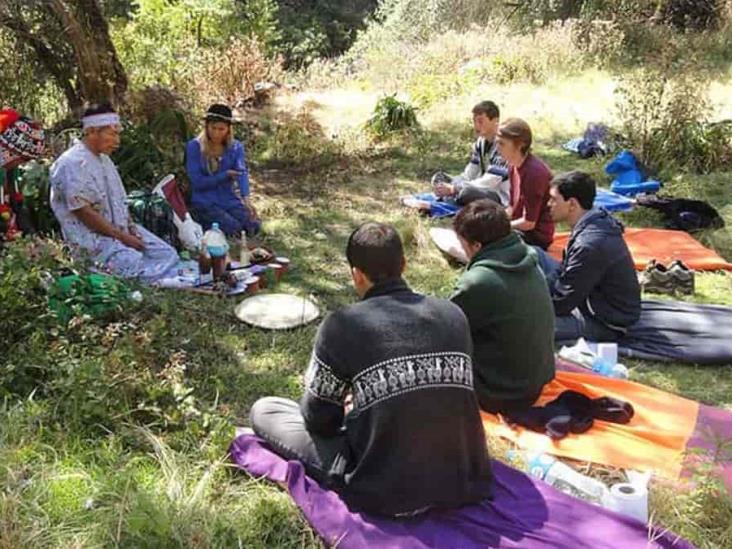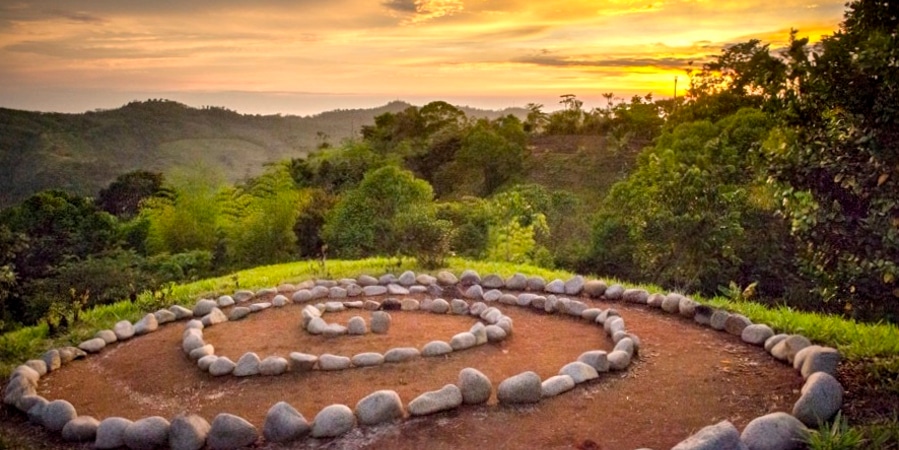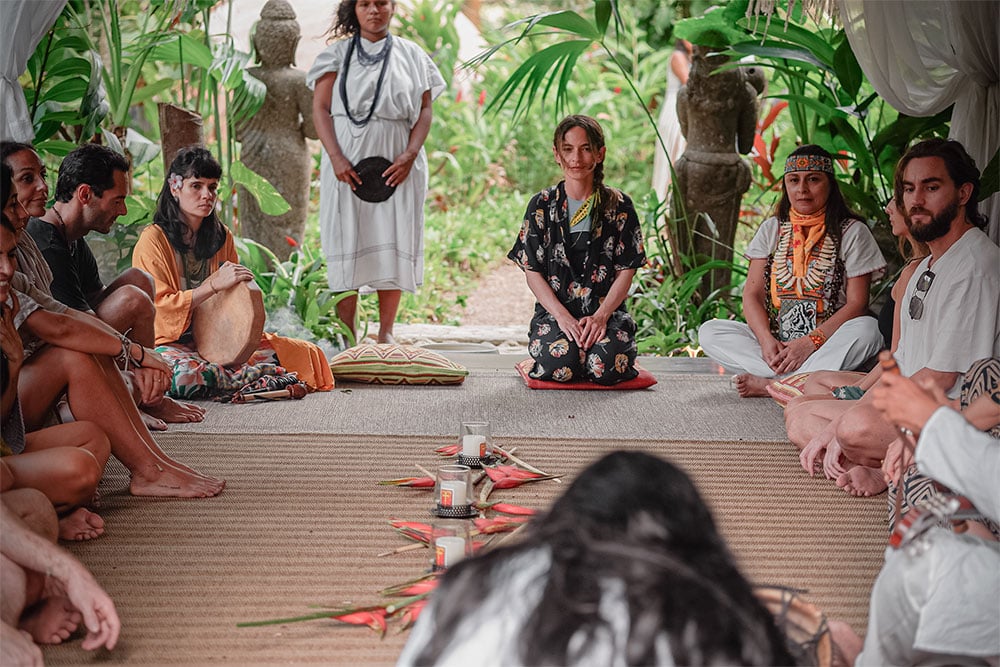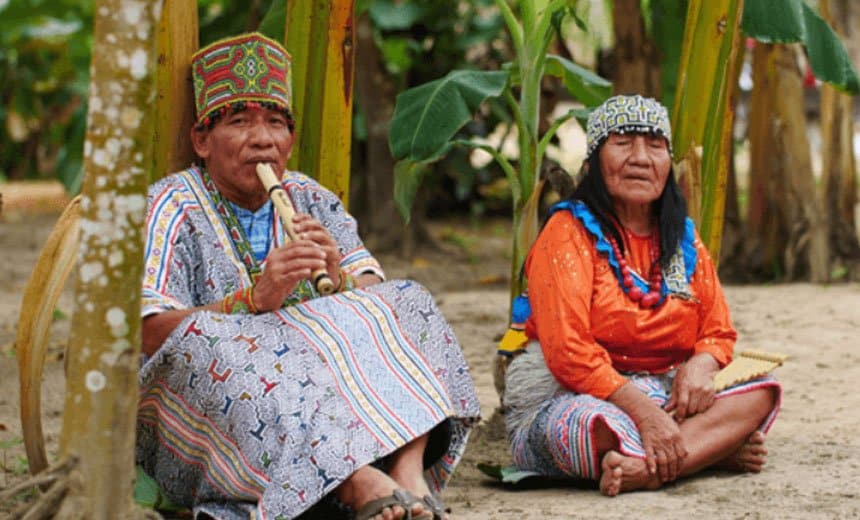Welcome to the Ayahuasca Experience blog, where we delve deep into the heart of Peru’s Ayahuasca retreats. Here, we’ll guide you through essential preparation steps to ensure a transformative journey. Join us as we uncover the path to spiritual awakening.
Embarking on the Sacred Journey: Essential Preparation for a Peru Ayahuasca Retreat
Embarking on the Sacred Journey of an Ayahuasca retreat, especially in the mystical land of Peru, requires thoughtful and careful preparation. The process is not just about booking tickets and accommodations but involves a deep internal readiness and respect for the profound spiritual work you are about to undertake.
Mental and Emotional Preparation is paramount. It is advisable to engage in meditation, contemplation, or any other mindfulness practices that center the mind and foster a state of presence. Familiarizing oneself with the history of Ayahuasca and the traditions of the indigenous cultures that have safeguarded this sacred medicine is also essential. This respect and understanding may deepen your connection to the experience.
When it comes to Physical Preparation, adhering to a special diet, often referred to as a «Dieta,» is crucial. This typically includes abstaining from certain foods, drugs, and behaviors known to be incompatible with Ayahuasca. Foods high in tyramine, salt, sugar, and caffeine, as well as recreational drugs and alcohol, should be avoided. Such discipline purifies the body, which not only reduces the risk of adverse reactions during the ceremony but also honors the sacred nature of the plant medicine.
Furthermore, setting Intentions for your journey can guide your experience towards healing and self-discovery. An Ayahuasca retreat is not a passive experience; rather, it’s an active engagement with your innermost self, your shadows, and your light. Reflect on what you wish to learn, release, or confront within yourself.
Lastly, ensure you are working with reputable guides or shamans who provide a Safe and Supportive Environment. A trusted facilitator is invaluable, as they not only lead the ceremony but also offer guidance and integration support, helping you to process and understand your experiences.
In summary, as you prepare for your Peru Ayahuasca Retreat, remember that this is more than a trip; it is a leap into the depths of your soul. Honor this opportunity with the care and reverence it deserves, and embrace the transformative power of Ayahuasca with an open heart and mind.
Can Ayahuasca Give An Intense Spiritual Experience? Sadhguru Answers
Gabor Maté: My Ayahuasca Breakthrough
Can I consume bread while following an ayahuasca diet?
When preparing for an Ayahuasca Retreat and Healing experience, it’s essential to follow a specific diet to ensure both safety and maximum benefit from the ceremony. This diet is commonly known as the Ayahuasca Diet or Dieta.
Generally, the Ayahuasca Diet recommends avoiding certain foods that contain tyramine, which can negatively interact with Monoamine Oxidase Inhibitors (MAOIs) present in the ayahuasca brew. Foods that are fermented, cured, aged, or contain high levels of yeast should typically be avoided.
When it comes to bread, whether or not you can consume it depends on the type of bread. It’s best to avoid bread made with yeast, such as most commercially available breads, because they may have a higher tyramine content. On the other hand, breads that are unleavened, such as flatbreads or some homemade options without yeast, are more likely to be acceptable.
During the dieta, it is recommended to eat foods that are simple, bland, and natural. The diet often includes cooked grains, steamed vegetables, and lean proteins like chicken or fish. Following these guidelines helps to purify the body and spirit, making participants more receptive to the healing properties of ayahuasca.
In conclusion, while following an Ayahuasca Diet, you should avoid yeast-containing breads but might enjoy unleavened varieties. Always check with your retreat facilitators for their specific dietary restrictions to ensure you are fully prepared for your healing journey.
What is the ayahuasca diet in Peru?
In the context of an Ayahuasca Retreat and Healing in Peru, the ayahuasca diet, or «dieta,» is an important preparatory and integrative process that participants often follow to maximize their experience with the sacred brew. This diet isn’t solely about food restrictions; it also encompasses a series of behaviors and practices aimed at purifying the body and mind.
Participants are usually advised to begin this diet weeks before their retreat starts. The key components of the ayahuasca diet include:
1. Food Restrictions: The dieta involves eliminating foods that are believed to interfere with the ayahuasca experience. This includes avoiding:
– Processed foods
– Spicy and heavily seasoned foods
– Pork and red meat
– Dairy products
– Caffeine and alcohol
– Refined sugars and sweets
– Fermented foods
– Excessive oils and fats
2. Medicinal Plant Integration: In some traditions, specific medicinal plants may be recommended to cleanse the body and prepare it for the ayahuasca ceremony.
3. Sexual Abstinence: It’s widely suggested to abstain from sexual activities before and after the ceremonies to preserve one’s energy for the healing process.
4. Mindfulness Practices: Engaging in practices such as meditation, yoga, or journaling can help participants set their intentions and maintain a calm, focused state of mind.
5. Limited External Stimuli: Reducing exposure to electronic devices, loud music, and other overwhelming sensory inputs is encouraged to help retreatants become more in tune with their inner selves.
6. Emotional Preparation: Part of the dieta can also involve introspection and emotional work, such as identifying issues one wishes to address during the experience or practicing forgiveness and release of resentments.
By adhering to the ayahuasca diet, individuals aim to clear their physical bodies of toxins and their minds of excessive noise, making them more receptive to the profound insights and healing that ayahuasca can provide. The diet continues during the retreat and often for a period afterward, to help integrate the spiritual lessons and physical cleansing that occur during the ceremonies.
What are the cleansing rituals in Peru?
In the context of Ayahuasca Retreat and Healing in Peru, several cleansing rituals are central to preparing individuals for the profound experience of drinking Ayahuasca. These rituals serve to purify both the body and the spirit, aligning participants with the healing energies and teachings of the plant medicine. Here are some of the commonly practiced cleansing rituals:
1. Dietas or Dieta: This refers to a diet followed before, during, and after the retreat, designed to cleanse the body and make it more receptive to the Ayahuasca. It typically involves abstinence from processed foods, alcohol, drugs, caffeine, sugar, and sometimes red meat, dairy, and spicy foods. The dieta enhances the connection with the spirit of Ayahuasca and may include specific plants or herbs recommended by the shaman.
2. Floral Baths (Baños Florales): A bath made from fragrant flowers, herbs, and sometimes perfumes intended to clean the aura and attract positive energy. Participants are often doused or bathed in these mixtures, which is believed to help release negative emotions and energies.
3. Smoke Baths (Baño de Humo): Shamanic practitioners use fragrant smoke from sacred plants like Palo Santo, Sage, or Mapacho (jungle tobacco) to cleanse the energy field of participants, offering psychic protection and grounding before the ceremony.
4. Vomitive: Some retreats administer a natural emetic, which induces vomiting, to clear the stomach of toxins and prepare the body physically and energetically for Ayahuasca. This process can be deeply cleansing, albeit challenging, as it serves to purge physical and emotional impurities.
5. Sweat Lodges (Temazcal): Modeled after Native American traditions, sweat lodges are used in some retreats to cleanse the body through intense heat and steam, often accompanied by prayers and chants.
6. Coca Leaf Readings: Shamans may perform readings using coca leaves to diagnose spiritual, emotional, or physical imbalances that need to be addressed during the healing process.
7. Medicinal Plant Baths: Similar to floral baths, but with a stronger emphasis on specific medicinal plants chosen for their property to cleanse, protect, or infuse the bather with strength and clarity.
8. Prayer and Intention Setting: Encouraged throughout the retreat, setting a clear intention or prayer for what one hopes to heal or receive from the Ayahuasca experience is considered a vital part of the cleansing process.
It’s important to recognize that these rituals are not just superfluous practices but integral parts of creating a sacred space and mindset that allows for deep healing and transformation during an Ayahuasca ceremony. Engaging in these rituals with respect and openness can greatly enhance one’s journey and overall experience at an Ayahuasca retreat.
How does one consume ayahuasca in Peru?
Consuming ayahuasca in Peru is a practice deeply rooted in indigenous traditions and should be approached with great respect and preparation. Most commonly, it is consumed as part of a ceremonial setting within a dedicated retreat or healing center. Here is a step-by-step process typically followed at an ayahuasca retreat in Peru:
1. Choosing the Right Retreat: It is essential to carefully select a reputable Ayahuasca Healing Retreat that provides a safe environment and experienced facilitators or shamans. Look for centers with positive reviews and a track record of ethical practices.
2. Preparation: Participants usually undergo physical and mental preparation before the ceremony. This may involve dietary restrictions, known as a «dieta,» avoiding alcohol, caffeine, drugs, and certain foods that can interact negatively with ayahuasca. Mental preparation often includes meditation, intention setting, and discussions with the shaman or facilitator.
3. The Ceremony: Ayahuasca ceremonies are typically held at night and led by a shaman or experienced facilitator. Participants sit or lie down in a quiet, dark space—often a maloca, or ceremonial hut. The shaman will perform rituals to invite protective spirits and set the intention for healing.
4. Consumption: Ayahuasca is administered as a brew made by combining the Banisteriopsis caapi vine with other plants, usually containing DMT, such as Psychotria viridis. The shaman blesses the ayahuasca before serving it to participants.
5. The Experience: After drinking the brew, participants may experience a range of effects, including visions, emotional release, deep introspection, and a sense of connectedness with nature. The experience can be intense, and guidance from the shaman or facilitator is available throughout the ceremony.
6. Integration: An integral part of the healing process is integrating the insights gained during the ceremony into one’s daily life. Retreats may offer post-ceremony discussions, individual consultations with the shaman, and additional supportive activities such as yoga or meditation to assist with integration.
7. Respect for Tradition: Throughout the process, it’s crucial to maintain respect for the cultural and spiritual significance of ayahuasca. Participating with humility and an open heart enhances the potential for healing and growth.
Please remember that ayahuasca is a powerful psychoactive substance with serious psychological and physiological effects. It is crucial to ensure it is legal and safe for you to participate in an ayahuasca ceremony, and always under the supervision of trained professionals in a controlled setting.
Frequent Questions
What dietary and lifestyle preparations are recommended before attending an Ayahuasca retreat in Peru?
Before attending an Ayahuasca retreat in Peru, it is recommended to follow a special diet known as the Ayahuasca Diet or Dieta. This includes abstaining from:
- Processed foods, spicy and fermented foods
- Excessive sugar and salt
- Red meat and pork
- Alcohol and recreational drugs
- Caffeine and carbonated drinks
- Sexual activities
Participants should also focus on meditative and grounding practices to mentally prepare for the experience. It’s also crucial to have adequate rest and hydration. These preparations help to purify the body and mind, enhancing the healing potential of the Ayahuasca experience.
How can I mentally prepare for the transformative experience of a Peruvian Ayahuasca retreat?
To mentally prepare for a Peruvian Ayahuasca retreat, consider the following steps:
1. Intention Setting: Reflect deeply on your reasons for seeking this experience and what you hope to gain or learn.
2. Educate Yourself: Research about Ayahuasca, its effects, the ceremony process, and the cultural context.
3. Meditation and Mindfulness: Practice regular meditation to cultivate a calm and present state of mind, which will help during the intense moments of the journey.
4. Dietary Adjustments: Follow the recommended dieta (diet) leading up to the retreat to prepare your body and show respect for the tradition.
5. Physical Preparation: Engage in physical activities that ground you and increase your stamina as some ceremonies can be physically demanding.
6. Emotional Readiness: Be open to facing potentially challenging emotional revelations and healing processes.
7. Consultation: Speak with the retreat facilitators about your intentions, concerns, and any medical or psychological conditions.
8. Community Support: Consider connecting with others who have experienced Ayahuasca to hear their insights and stories.
Remember, an Ayahuasca retreat is not just about the ceremony itself but involves an ongoing process of integration and self-discovery.
What specific guidelines should be followed to ensure a safe and effective Ayahuasca ceremony during a retreat in Peru?
To ensure a safe and effective Ayahuasca ceremony during a retreat in Peru, you should adhere to the following guidelines:
- Choose a reputable retreat center with experienced facilitators and shamans.
- Ensure medical screening is done beforehand to assess your physical and mental health compatibility.
- Abide by the dietary restrictions (dieta) before and after the ceremony, avoiding alcohol, drugs, caffeine, and certain foods.
- Disclose any medications or supplements you are taking as some can have dangerous interactions with Ayahuasca.
- Follow the guidance of the shaman and facilitators, maintaining a respectful and open-minded attitude towards the process.
- Participate in integration sessions after ceremonies to process your experiences effectively.
- Stay hydrated and get plenty of rest, but avoid drinking excessive amounts of water during the ceremony to prevent water intoxication.
- Respect the sacredness of the ceremony and the cultural traditions that surround the use of Ayahuasca.
Remember that preparation and aftercare are just as important as the ceremony itself for healing and transformation.
In conclusion, preparing for an Ayahuasca retreat in Peru is a journey that begins long before you set foot in the sacred lands where the brew is created. Mindful preparation, which includes dietary changes, mental conditioning, and setting clear intentions, can significantly enhance your healing experience. By respecting the traditions and guidelines set forth by experienced shamans, we open ourselves up to the profound transformations that Ayahuasca can instigate within our hearts and minds. It’s essential to remember that a retreat is not just about the ceremony itself, but the integration of the lessons learned into our daily lives. Whether you’re seeking spiritual enlightenment, emotional healing, or personal growth, the path of Ayahuasca is one of respect, openness, and surrender. Approach your journey with humility and courage, and allow the ancient wisdom of Ayahuasca to guide you towards a deeper connection with the self and the universe. As you embark on this transformative experience, remember that preparation is the key to unlocking the full potential of your Peru Ayahuasca retreat and the profound healing it can offer.






